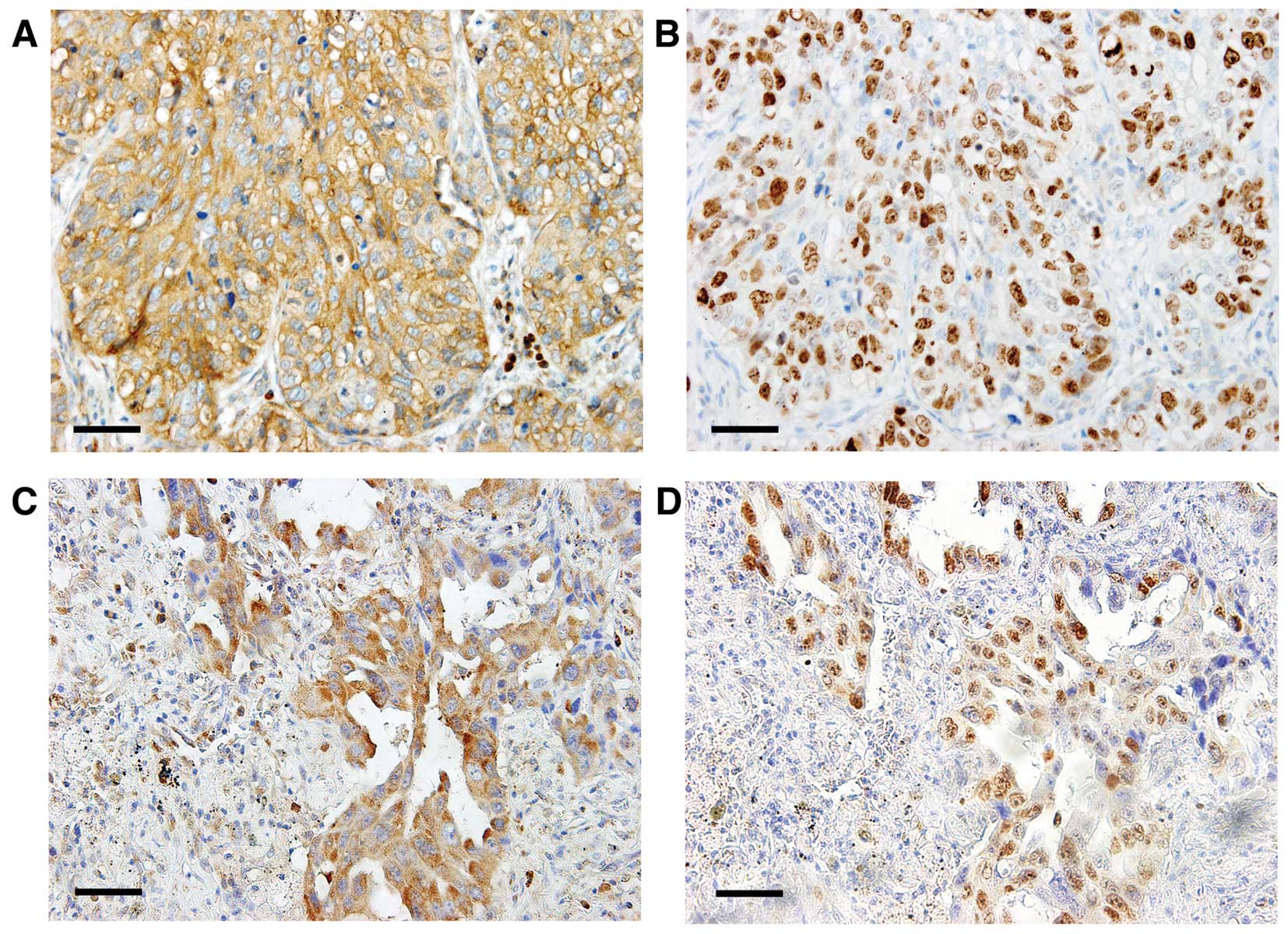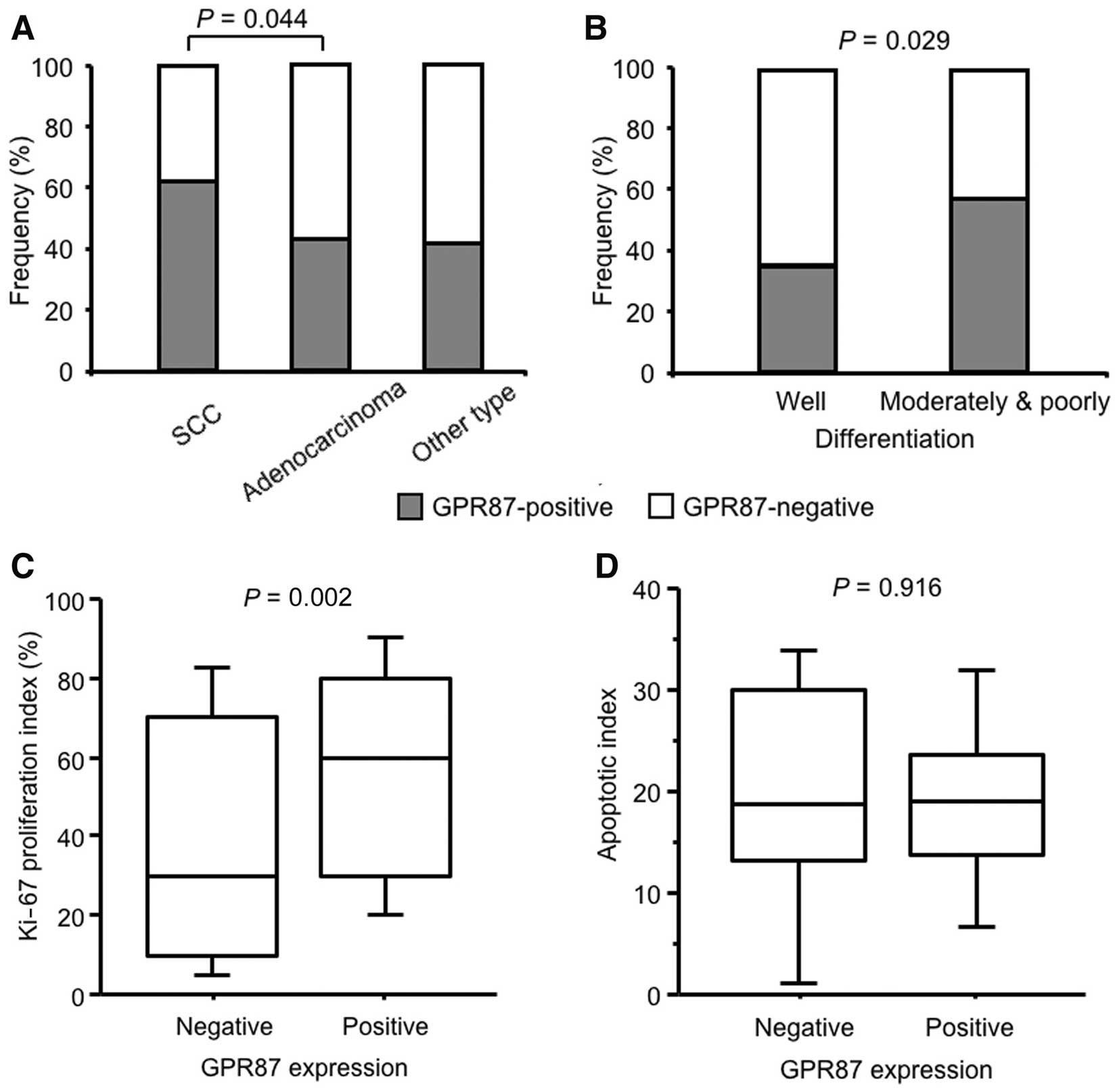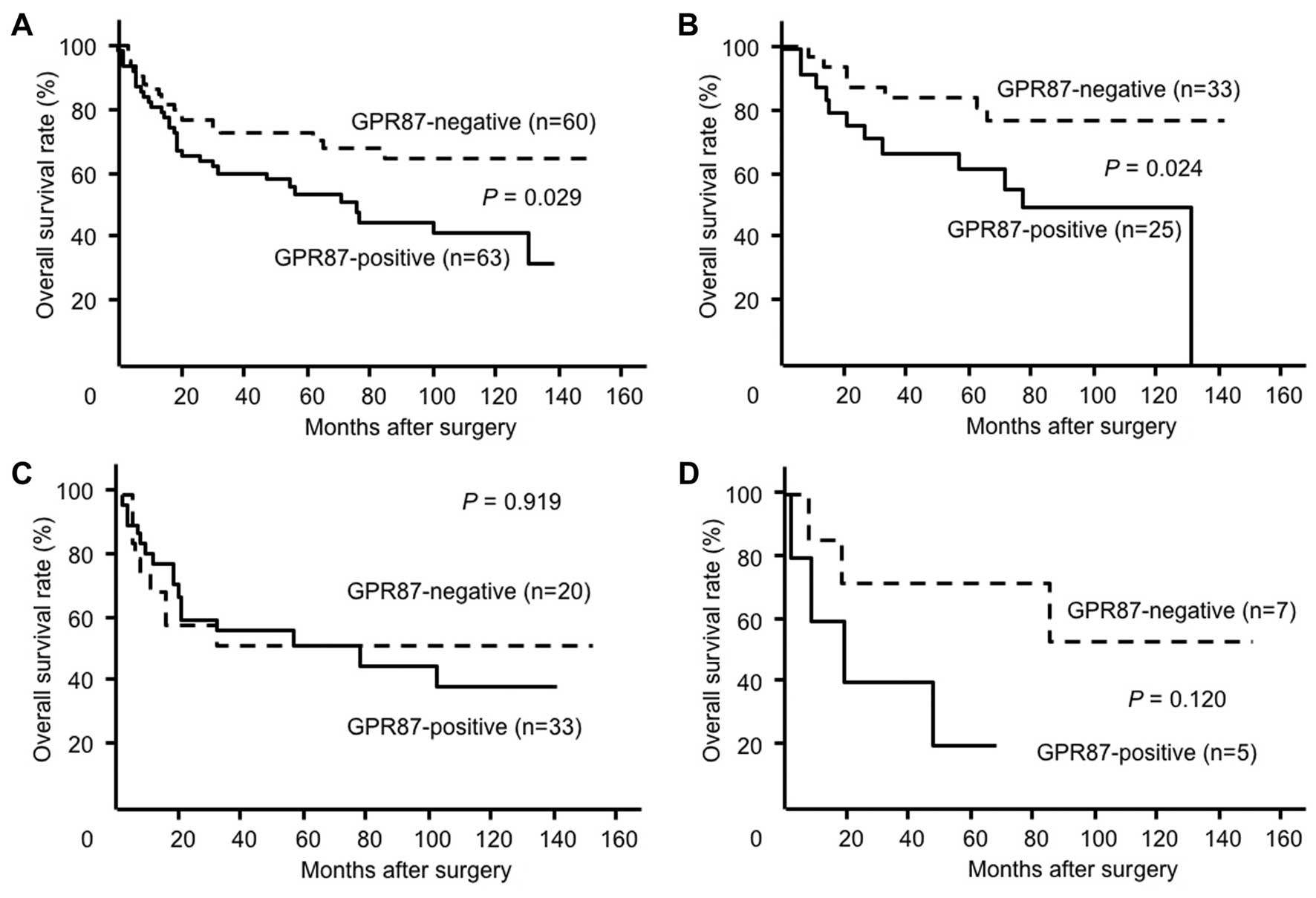Overexpression of G protein‑coupled receptor 87 correlates with poorer tumor differentiation and higher tumor proliferation in non‑small‑cell lung cancer
- Authors:
- Published online on: May 15, 2014 https://doi.org/10.3892/mco.2014.292
- Pages: 539-544
Metrics: Total
Views: 0 (Spandidos Publications: | PMC Statistics: )
Total PDF Downloads: 0 (Spandidos Publications: | PMC Statistics: )
Abstract
G protein‑coupled receptor 87 (GPR87) is a newly deorphanized member of the transmembrane G protein‑coupled receptor family. Recently, GPR87 was suggested to contribute to the viability of human tumor cells and overexpression of GPR87 mRNA was detected in a number of malignant tumors, including lung cancer. We performed a retrospective study of GPR87 expression in association with clinical characteristics and biological markers in non‑small‑cell lung cancer (NSCLC). We investigated a total of 123 patients with NSCLC who underwent surgery between 1999 and 2004 (58 adenocarcinomas, 53 squamous cell carcinomas and 12 others). Immunohistochemistry was used to evaluate the intratumoral expression of GPR87 and the Ki‑67 proliferation index. The TUNEL method was also used to investigate tumor apoptosis. A total of 63 tumors (51.2%) were found to be GPR87‑positive. These tumors were more frequently encountered among squamous cell carcinomas rather than among adenocarcinomas (62.3 vs. 43.1%, respectively; P=0.044) and were significantly more frequently poorly and moderately differentiated rather than well differentiated (P=0.029). Moreover, the Ki‑67 index was significantly higher in GPR87‑positive compared to GPR87‑negative tumors (57.0 vs. 40.0%, respectively; P=0.002). The overall survival was significantly worse for patients with GPR87‑positive compared to those with GPR87‑negative tumors (P=0.029). The Cox regression analyses also demonstrated that the GPR87 status was a significant prognostic factor for NSCLC patients [hazard ratio=2.053; P=0.018). The present study demonstrated that in NSCLC, the overexpression of GPR87 is significantly associated with poorer differentiation and higher proliferation. During the progression of NSCLC, GPR87 overexpression may be associated with the acquisition of a more aggressive phenotype and, therefore, is a potentially useful target for prognostication and treatment.












